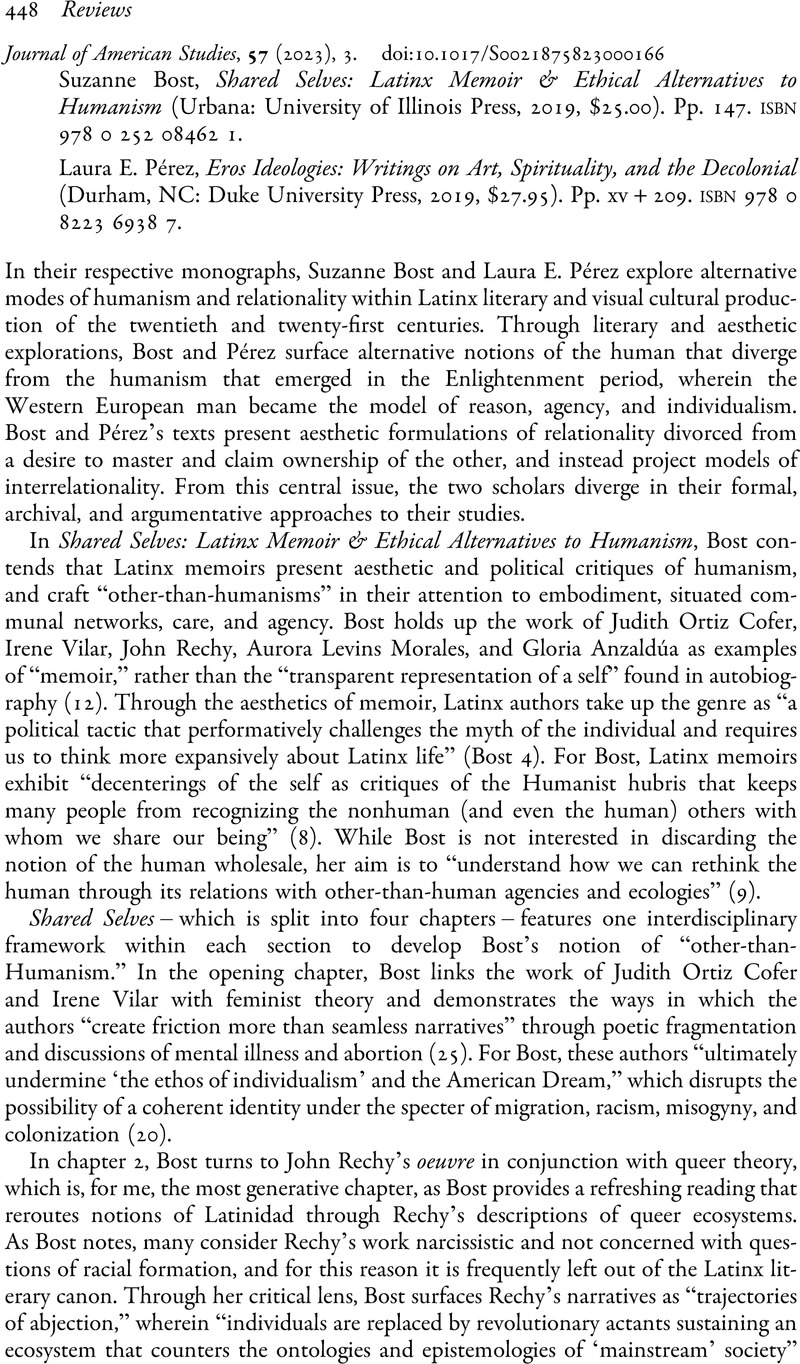No CrossRef data available.
Article contents
Suzanne Bost, Shared Selves: Latinx Memoir & Ethical Alternatives to Humanism (Urbana: University of Illinois Press, 2019, $25.00). Pp. 147. isbn 978 0 252 08462 1. - Laura E. Pérez, Eros Ideologies: Writings on Art, Spirituality, and the Decolonial (Durham, NC: Duke University Press, 2019, $27.95). Pp. xv + 209. isbn 978 0 8223 6938 7.
Review products
Suzanne Bost, Shared Selves: Latinx Memoir & Ethical Alternatives to Humanism (Urbana: University of Illinois Press, 2019, $25.00). Pp. 147. isbn 978 0 252 08462 1.
Laura E. Pérez, Eros Ideologies: Writings on Art, Spirituality, and the Decolonial (Durham, NC: Duke University Press, 2019, $27.95). Pp. xv + 209. isbn 978 0 8223 6938 7.
Published online by Cambridge University Press: 04 August 2023
Abstract
An abstract is not available for this content so a preview has been provided. Please use the Get access link above for information on how to access this content.

- Type
- Review
- Information
- Copyright
- Copyright © The Author(s), 2023. Published by Cambridge University Press in association with the British Association for American Studies



